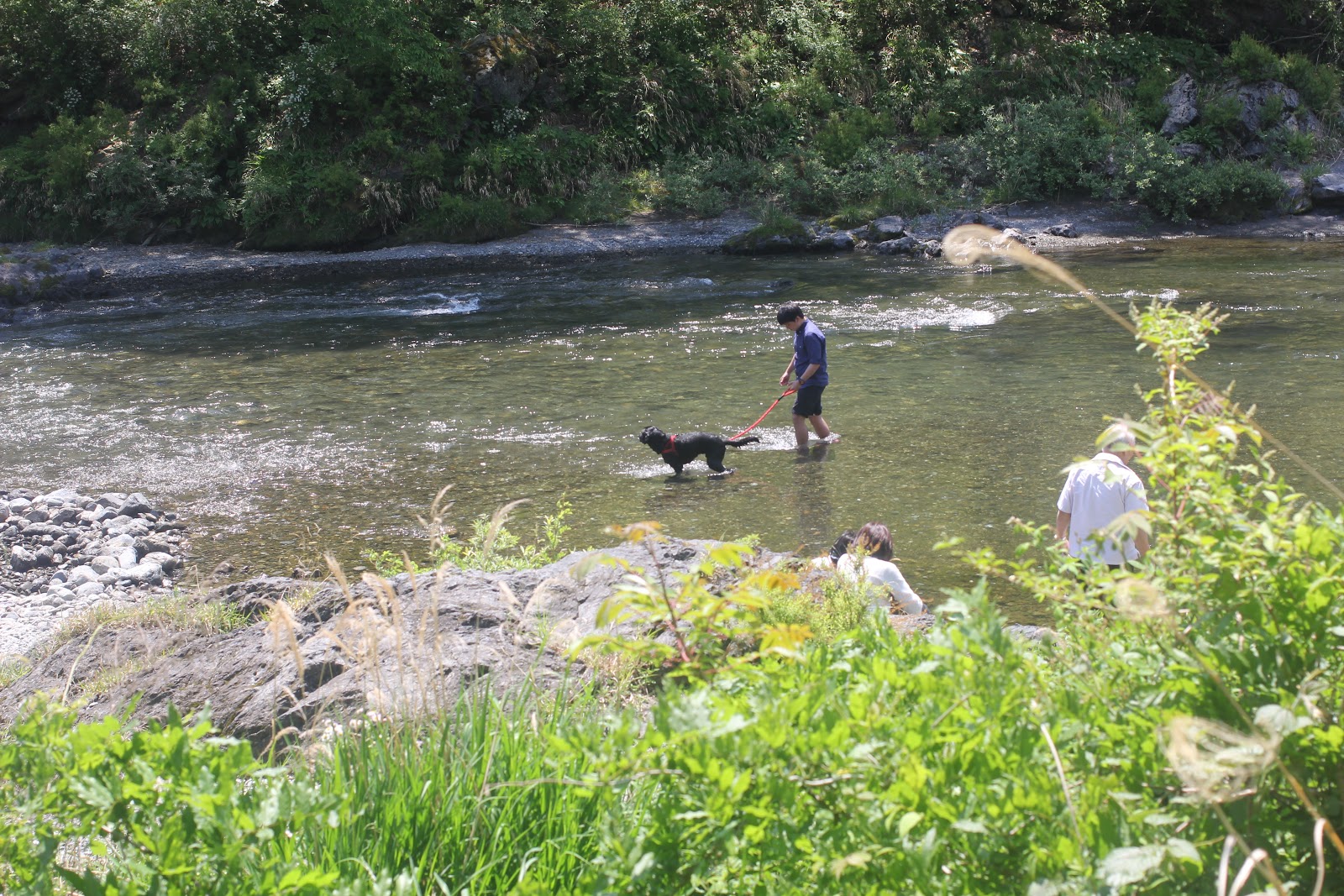Rural Tokyo: Shishimai Lion Dance
It never ceases to amaze me at how immense Tokyo is, 845 sq miles (2,188 km²), making it one of the largest metropolitan cities in the world. So much culture and so many events are held almost every single month.
 |
| This is Tokyo! |
I was invited to attend yet another great event with some sake drinking buddies in the countryside - yes, Tokyo has a countryside! The event this time was held in a very pristine and beautiful part of Tokyo called Okutama at the Yakumo Shrine. Never did I imagine that tucked away deep behind that mountain pass in the photo we would enjoy a beautiful traditional Japanese exhibition called the Lion Dance. The tradition behind it is steeped in mystery from as far back as ancient times. Read an excellent write-up here. Before we made our way to Yakumo Shrine we had to wet our whistles, and in typical fashion as sake drunkards do, we stocked up on delicious Japanese nihonshu fresh from the brewer.
 |
| Ozawa Shuzo |
We stopped by to sample some really good local Tokyo brewed sake at a brewery called Ozawa Shuzo, which makes Sawanoi, a locally brewed Tokyo sake. The brown cedar ball you see on the building in back is called a "sugi-dama." When it's green it means the sake is young and fresh. When it's brown it means the sake has some maturity and complexity, the kind I like best. Often times, people overlook Tokyo sake because it doesn't enjoy as much international appeal as sake from Niigata Prefecture, the motherlode of sake. This is largely due to misconceptions about Tokyo not having delicious spring water, a vital component necessary from brewing sake. This is one of the biggest misconceptions about Tokyo. The water here is excellent! And the sake is wonderful and so are the people.
 |
| President |
After the six of us downed a few local beers and stocking up on over half a dozen sake, including one large 1.8 liter, the president of Ozawa Brewery sees us off at the pass and wishes us well as we begin our hike down the river trail.
 |
| White Water Rafting |
It felt like summer. Temps were hovering at around a balmy 27C. The air was fresh and crisp and the first hints of a buzz start to creep up on me. The man and his dog were playing fetch in the fresh cool water. People were Barbecuing and laying out in the sun. It was a perfect day.
There was no doubting that spring was here. It was all over the place in greens and purples. Wisteria grows along the mountains here, and in low valleys and shrubs. Taking in all this nature over delicious rice brew it was time for lunch, so we headed over to a place called Omotoya
 |
| Fresh River Fish Caught and marinated in vinegar served whole. |
 |
| Sushi, shishito peppers, boiled yuba, and miso. |
View Larger Map
After lunch we hailed taxis the rest of the way because we were running short on time. After arriving there at Yakumo Shrine we had to hike up a a narrow path.
 |
| The Kawai Yakumo Shrine: A Tangible Folklore Cultural Property |
Here is the actual photo of the stage below. This has been around for centuries and is maintained in its original form. Notice the plain wood. A truly traditional Japanese style building is never adorned in bright colors inlaid with precious stones. The Shinto Faith emphasizes a harmony with nature as gods, and do not need to be adorned in paints and gaudiness. Simple is best.
What you'll need in order to enjoy this event is a good drinking utensil, unagi bones ( Eel bones), dried baby octopus and copious amounts of free flowing Tokyo brewed nihonshu and good friends!
 |
| Mutsu Hassen Sake Cup |
 |
| Unagi Bones |
 |
| Dried Baby Octopus |
 |
| Care for one? |
Our pourer for this event was the debonair and talented Mr. Ichibay. He demonstrates how to taste sake. And with his approval, we imbibe as the lions square off.
There are two lions that move around in a rhythmical dance like they are facing each other off. This procession continues for hours.
The lions are battling it out for the females in floral hats. You cannot see their faces. The myth is also about how the lions were sent down from heaven as an omen of good luck. There are many interpretations to this story.
In the end a farmer defeats the last lion in an epic battle that restores peace to the villagers. End to a wonderful performance. If you are ever in Tokyo next year on May 5th, please don't miss it. Again, click on the link above to be taken to Ichibays site to learn more.












Comments
Post a Comment